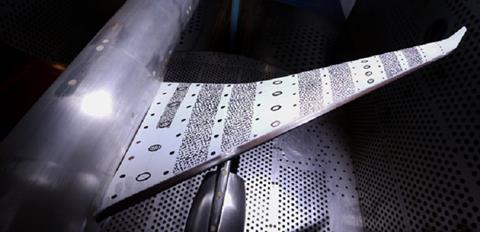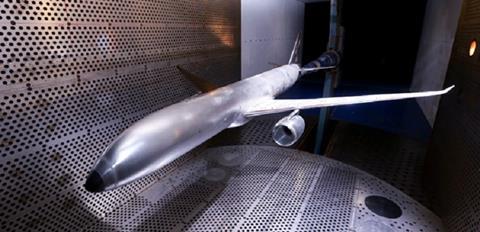Aerodynamic analysis of the Chinese-Russian long-haul CRAIC CR929 twinjet is progressing, with windtunnel tests to examine wing designs for the type.
Models of the CR929 have undergone windtunnel testing at the Moscow Central Aerohydrodynamic Institute, with previous studies looking at cruise characteristics of different wing options and the effects of flight controls.
But the institute says the latest analysis, newly completed, has concentrated on the wing-tip and the potential of a “crescent” design. It shares similarities with the raked tip developed for the Boeing 767-400 and 777-300ER.
Aircraft and missile aerodynamics department head Ivan Chernyshev says the narrowing of the wing, while reducing weight, presents a “serious challenge”.
“It is important to prevent stall phenomena appearing at the ends of the wing, both at low and high flight speeds,” he says.

The windtunnel tests were carried out at speeds up to M0.96 with values for the Reynolds number – used in the analysis of laminar-to-turbulent airflow – of 3.5-5 million.
Researchers used videogrammetry to assess wing deformation and the institute says the work “confirmed” the “high aerodynamic quality” of the configuration and the cruise speed of M0.85.
The next stage of the analysis, to commence this year, will look at the trailing edge of the wing in cruise and the characteristics of modified pylons for the CR929’s engines.
Russia’s United Aircraft, through its Irkut division, and Chinese manufacturer Comac are co-operating with development of the CR929, which is envisioned as a family of long-haul aircraft capable of accommodating 250-300 passengers.






























